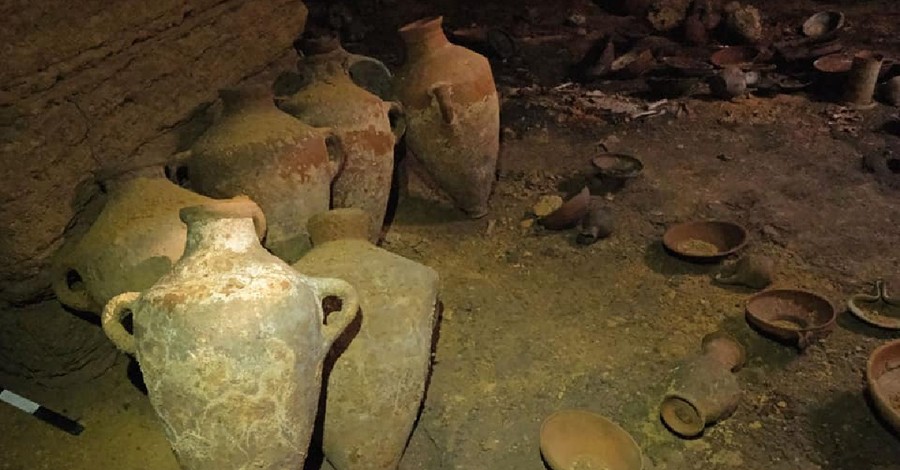
Israeli archaeologists this week unveiled what they are calling a "once-in-a-lifetime discovery" involving 3,300-year-old untouched pottery that dates to the time of Egyptian Pharaoh Rameses II and, possibly, to the time of Moses.
The discovery, unveiled Sunday, was made last week when a mechanical digger penetrated the roof of a cave at Palmachim Beach National Park, revealing a large room seemingly "frozen in time" and filled with pottery and other objects that would have been used in an Egyptian burial. At the time, the Egyptian kingdom included the land that is now Israel.
The Israel Antiquities Authority (IAA) said the cave looked like an "Indiana Jones film set," filled with intact bowls and jugs.
"The hewn cave was square in form with a central supporting pillar," IAA said. "Several dozens of intact pottery and bronze artifacts were lain out in the cave, exactly as they were arranged in the burial ceremony about 3,300 years ago. These vessels were burial offerings that accompanied the deceased in the belief that they would serve the dead in the afterlife."
Archaeologists said the pottery had been "untouched for 3,300 years" and dates to the Late Bronze Age, about the time of Egyptian Pharaoh Rameses II. Although modern movies such as The Prince of Egypt and The Ten Commandments depict Rameses as the pharaoh who told Moses he would not free the Hebrews, many scholars and biblical experts say Moses and Rameses II were not contemporaries.
"This is a once-in-a-lifetime discovery," said Eli Yannai of the Israel Antiquities Authority. "... The fact that the cave was sealed, and not looted in later periods, will allow us to employ the modern scientific methods available today, to retrieve much information from the artifacts and from the residues extant on the vessels, for example, organic remains that are not visible to the naked eye. The cave may furnish a complete picture of the Late Bronze Age funerary customs."
Israel Antiquities Authority director Eli Eskosido and Israel Nature and Parks Authority director Raya Shurky called the discovery "absolutely astonishing."
"Within a few days, we will formulate a plan to carry out the research and the protection of this unique site, which is a feast for the archaeological world and for the ancient history of the land of Israel," they said in the news release.
Photo courtesy: ©Israel Antiquities Authority, used with permission.
Michael Foust has covered the intersection of faith and news for 20 years. His stories have appeared in Baptist Press, Christianity Today, The Christian Post, the Leaf-Chronicle, the Toronto Star and the Knoxville News-Sentinel.










